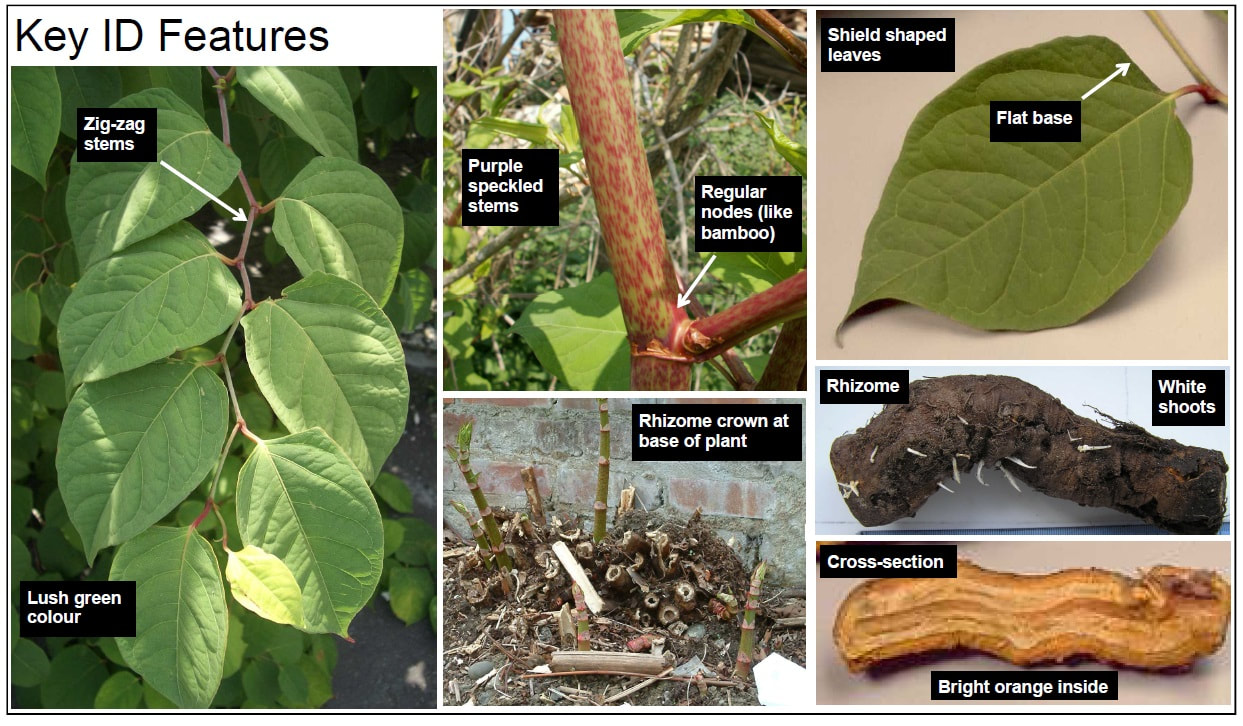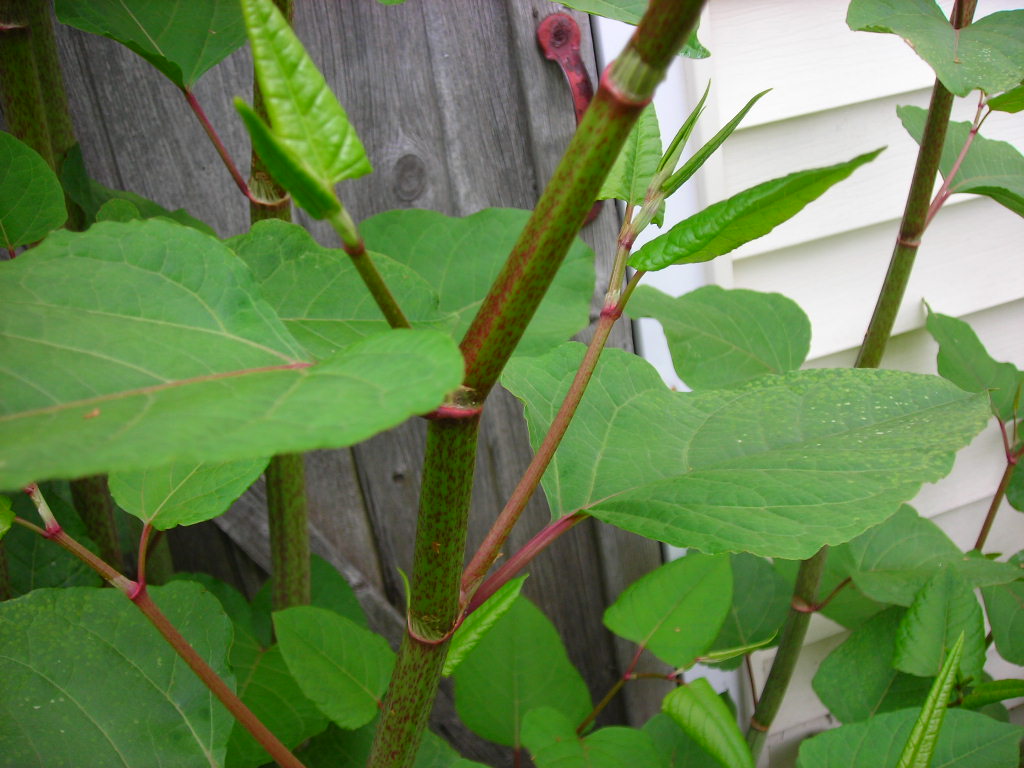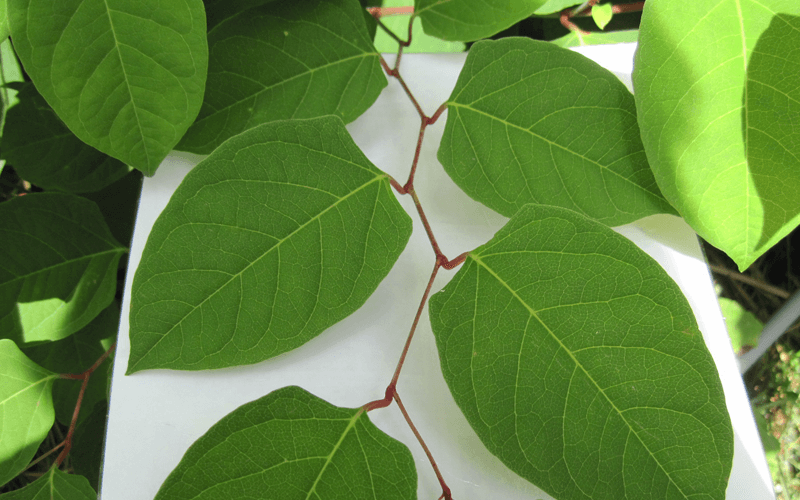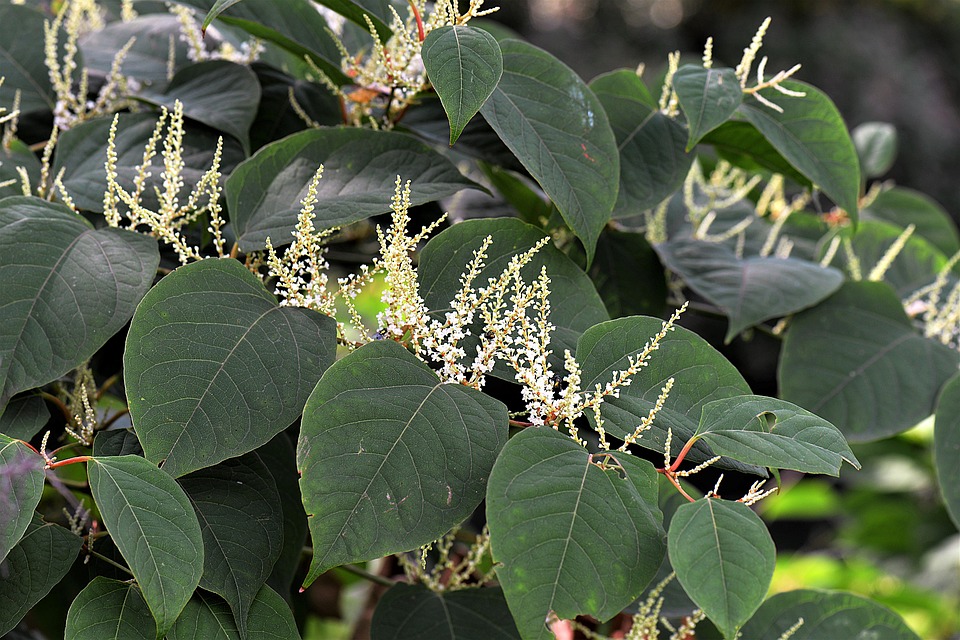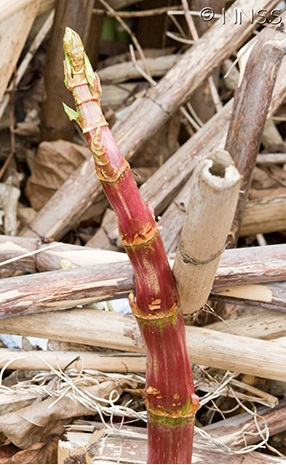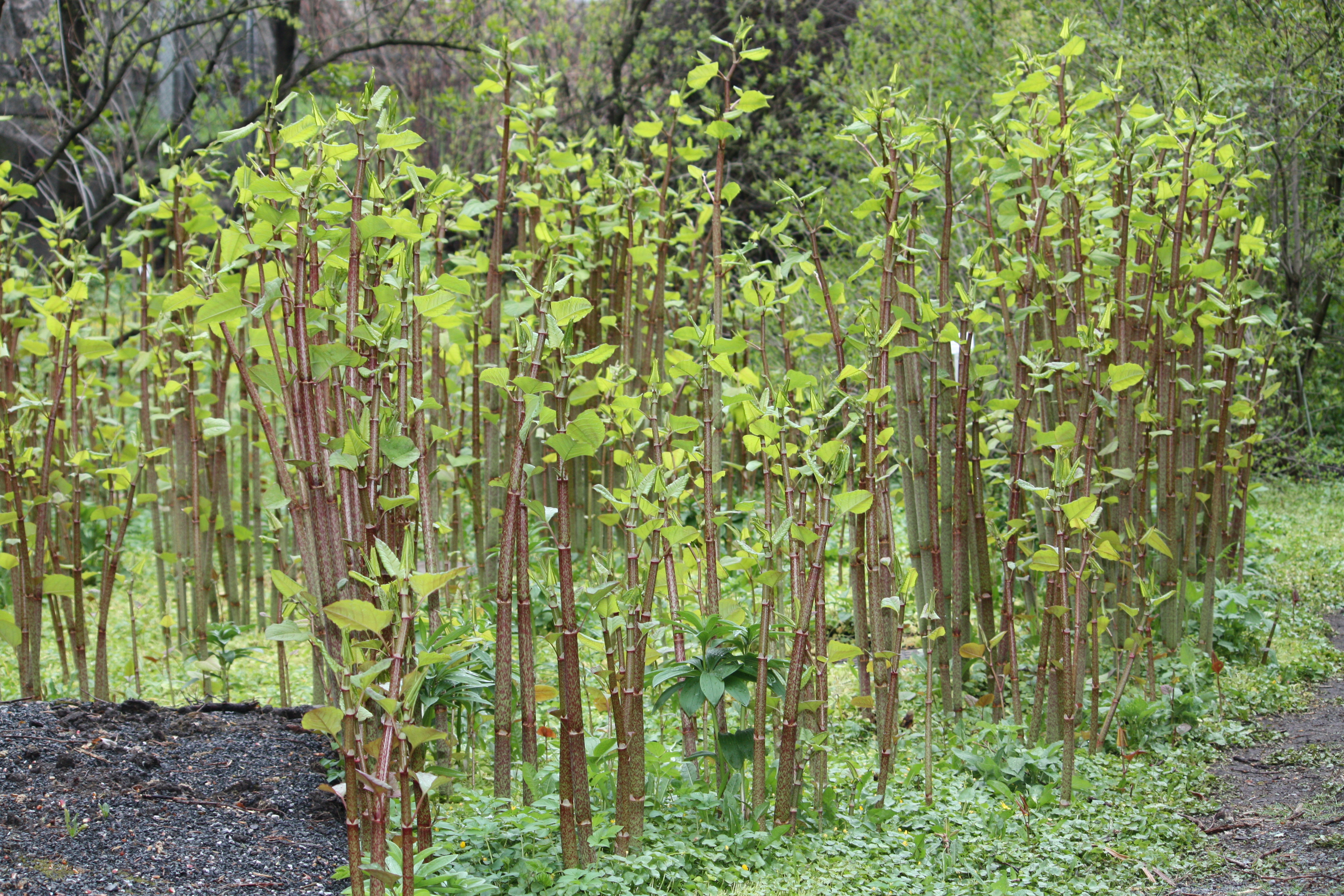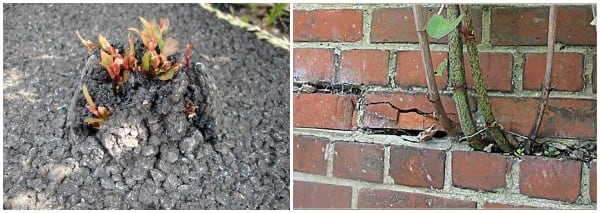Knotweed Species

Knotweed Species
(Fallopia sp.)
Priority: - Contain / Annual Control
Tags: Aquatic | Terrestrial
Identification and Reproduction
Identification:
There are four species of knotweeds in BC: Japanese knotweed (Fallopia japonica), Giant knotweed (Fallopia sachalinese), Bohemian knotweed (Fallopia x bohemica), and Himalayan knotweed (Polygonum polystachyum). All of these occur in the Fraser Valley, though Japanese and Bohemian are most common, and are difficult to tell apart.
(Photo from Metro Vancouver Knotweed BMP)
(Photo from GB Non-Native Species Secretariat Factsheet)
All have the following characteristics:
- Large, woody, bamboo-like shrub that grows 1-5 m tall. Stems or canes are hollow, upright, bamboo-like and greenish-brown with reddish speckles. In the winter canes may persist but will turn brown and straw-like.
- Knotweed grows in dense thickets.
- Leaves are heart to triangular-shaped on all species except Himalayan knotweed, which has lance-shaped, elongated leaves. Aside from giant knotweed, leaves on other species range from 8-10 cm wide and can grow upto 15 cm in length. Giant knotweed leaves are double the size.
- Japanese knotweed has a distinct zig-zagged branching pattern along the stems.
- Flowers will be creamy white to light green, branching in upright clusters along the stem and leaf joints.
- Newly emerging buds will be pink to red in colour and appear in the early spring. They will quickly develop into asparagus-looking stems through the spring.
For more help identifying Himalayan knotweed please check out our next page.
Reproduction:
- Knotweeds are perennials that spread primarily vegetatively. The rhizome system may extend from a parent plant up to 20 meters laterally and to 3 meters deep. Root and stem fragments as small as 1 cm can form new plant colonies.
- Fresh stems produce shoots and roots when buried in a soil medium or floated in water. Stems submerged in water can produce viable plants within 6 days. Dispersal occurs through root (rhizome) and stem fragments by human activities or by water.
- Reproduction also occurs by seed in Bohemian knotweed.
Habitat & Ecology
- Thrive on freshly disturbed soil in roadside ditches, low-lying areas, irrigation canals, and other water drainage systems.
- Also found in riparian areas, along stream banks, and in other areas with high soil moisture.
- Knotweeds are able to grow in partial shade or full sun.
- They are extremely aggressive and can grow through concrete!
Impacts
Social:
- Create dangerous situations by obstructing sightlines along roadsides.
- Damage infrastructure like buildings, sidewalks/roads, or drainage systems.
- Reduce property values restricting access and damaging buildings.
- Increase costs to private property owners to repair areas affected by invasive species.
Ecological:
- Form dense monocultures.
- Increase erosion on streambanks.
- Destroy natural habitat for native species.
Management
Knotweed is a plant that goes dormant in the winter - this can impact how and when you decide to conduct treatments. Learn more about Plant Dormancy and why it matters (King County Noxious Weeds News). When knotweed is actively growing, that is when treatments are most effective.
Mechanical/Manual Control:
Mowing and Cutting is NOT RECOMMENDED for controlling knotweed.
Mowing and cutting can spread vegetative fragments that can root and start new infestations. The action of mowing/cutting can also stimulate dormant rhizome buds to grow, causing the plant roots to grow deeper and further, growing back more aggressively in future years.
Digging should be used with high caution - Unless this is a small, poorly established patch of knotweed plants, where the physical removal of the roots can be achieved, digging can also stimulate the growth of dormant lateral buds, causing the roots to grow larger. Any digging work should REMOVE the roots - even a piece as small as 1 cm can regrow a new plant.
Chemical Control:
Currently, chemical control is the most effective method of controlling knotweed.
If land owners are not comfortable or able to conduct chemical control on knotweed on their property, there are some local invasive plant management companies that can be hired to complete the work - See list here.
Things to keep in mind:
- Site condition
- Be aware of the site, the surroundings, and any wildlife potentially on or in the plants
- Be careful to avoid impacting the surrounding vegetation and environment as much as possible - use tarps as shielding when possible and necessary
- Always follow the herbicide label instructions!
- Timing:
- The best and more targeted application time is during late summer, after plants flower but before they begin to yellow. This is when the knotweed begins to prepare for winter dormancy by taking nutrients (and therefore the herbicide) into the roots.
- A spring herbicide application or cutting first can also be done in June or July will set the plant back so that it can be sprayed a second time in September or October (before the first frost) .
- Targeted timing of treatment is most important, and more chemical application does not equal greater success.
- Foliar spray:
- When applying foliar applications to knotweed, the underside AND upper side of the leaves should be sprayed whenever safe and practicable.
- Treatment should occur when plants are 1-2 m tall (generally that is when many leaves will have formed). Avoid cutting the plants during this time to allow as many leaves (and therefore surface area) to form
- The plants need to have enough leaves to take in the herbicide into the roots - the roots are the part of the plant that need to be killed in order to control this plant. Any herbicide that only tackles the above-ground foliage will not control knotweed.
- Stem-injection:
- If stem-injecting, treatments should occur when the stems are approximately 2 cm (1-inch) diameter, otherwise the hollow space in the stem will not yet have formed
- Ensure that ALL stems are injected, mark the injected stems with a marker to help keep track
For more information on chemical control on knotweed please read Metro Vancouver's BMP for the knotweed species (pg. 11).
Always read and follow the chemical product label!
Powell River - Make Powell River Knotweed free Video
Step-by-step instructions to chemically control knotweed, referenced from Powell River's Parks, Recreation and Culture, Invasive Species: Knotweed Removal guide):
Methods Used To Remove Japanese Knotweed Video (Robert Denny, UK)
Please be aware that this video is from the UK, so some of the herbicide information is not applicable in Canada. However the video is a nice overview of the herbicide application methods that may be used on knotweed plants, if the label allows it. Always read and follow the label of the product you are using.
Resources
Please refer to the Metro Vancouver's Best Management Practices for the Knotweed Species (pg. 12-24) for specific details on how to control invasive knotweed.
Download the Invasive Species Council of BC's Factsheet on invasive knotweeds here.
King County has some excellent resources on knotweed identification and management. Note this is a resource from the US and Canadian guidelines and regulations may differ. Be sure to follow chemical labels.
Header photo (W.carter).
Photo Gallery









